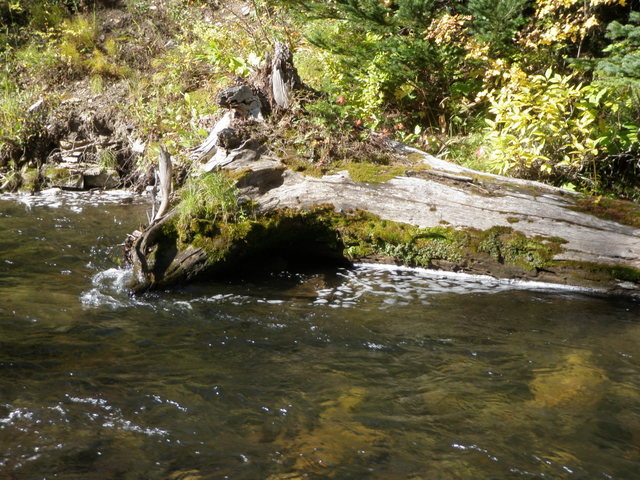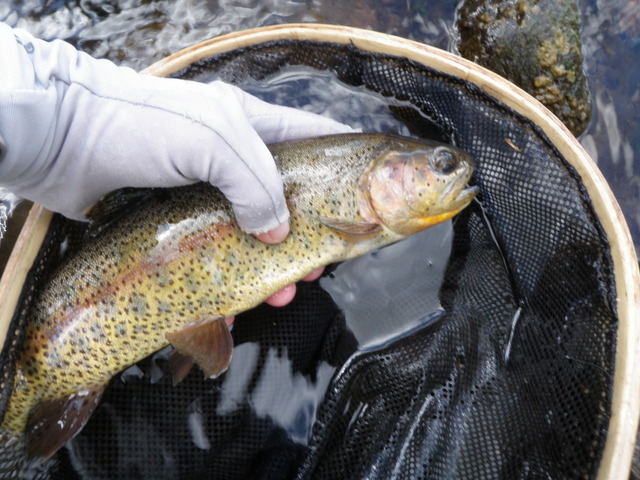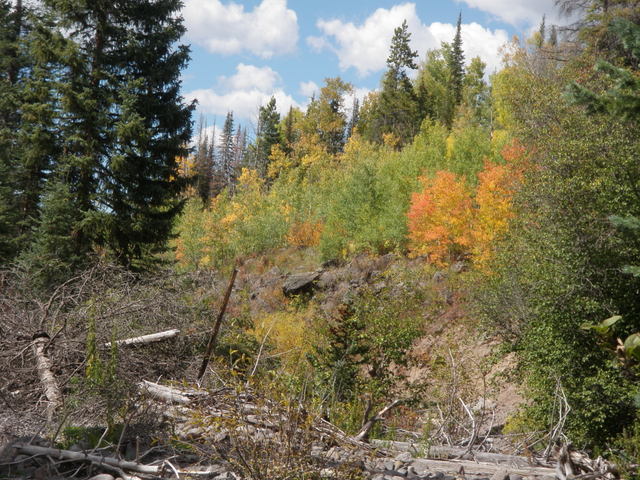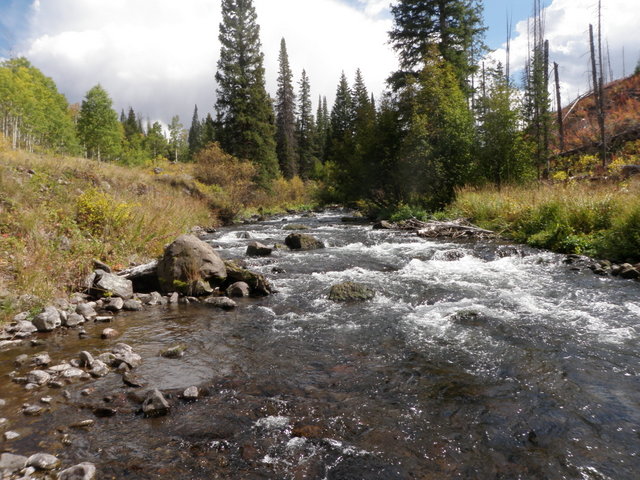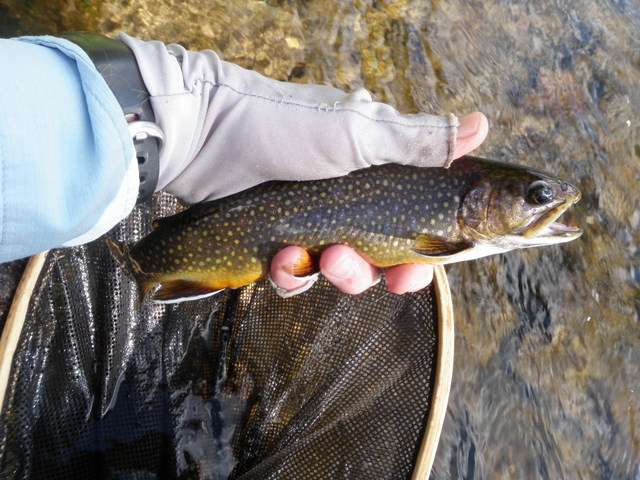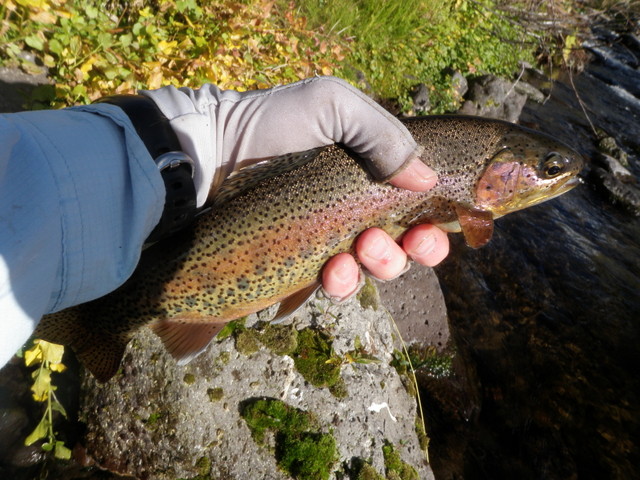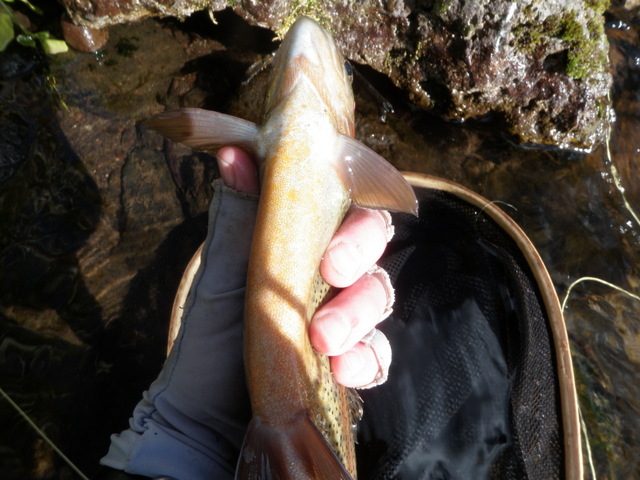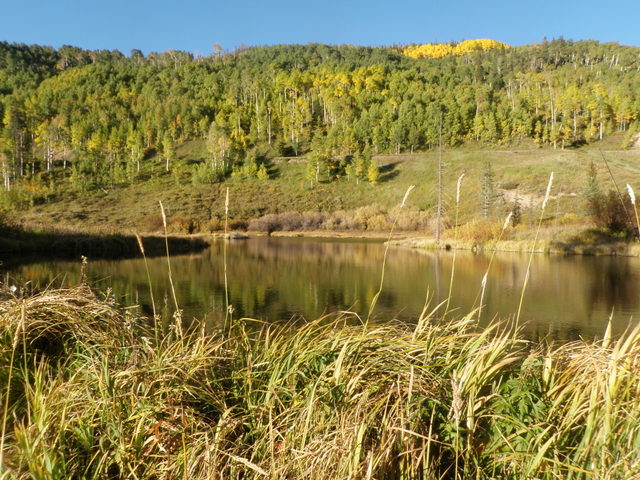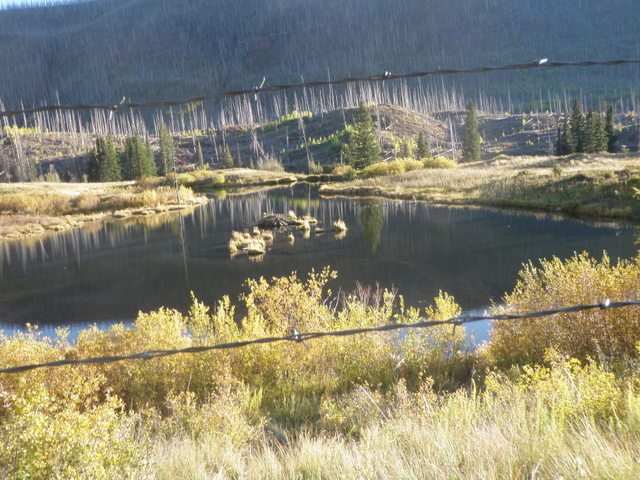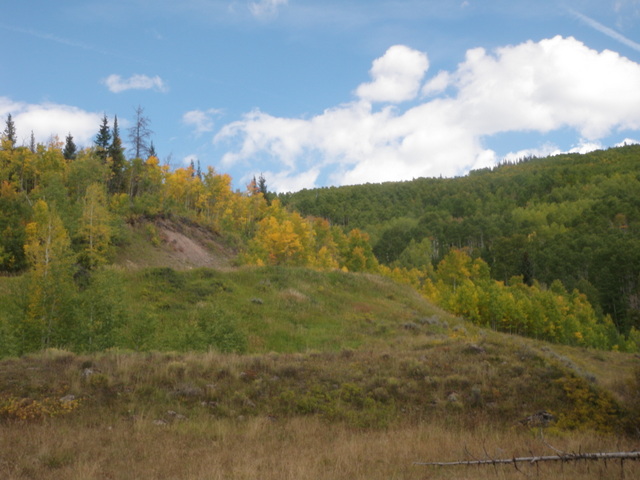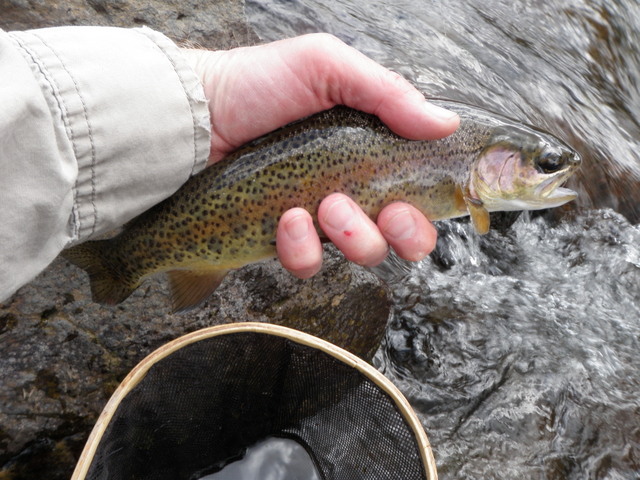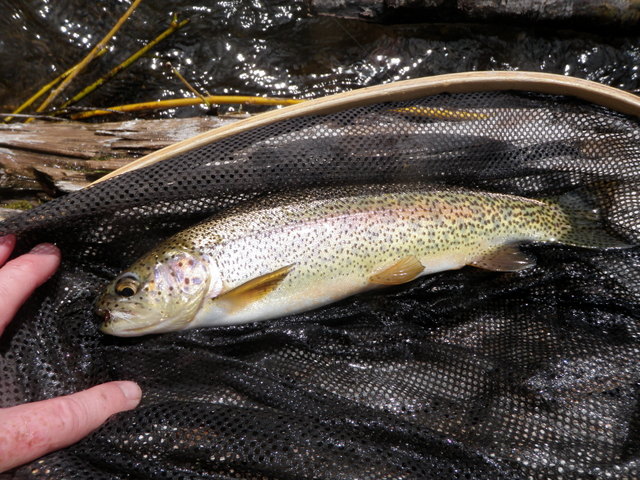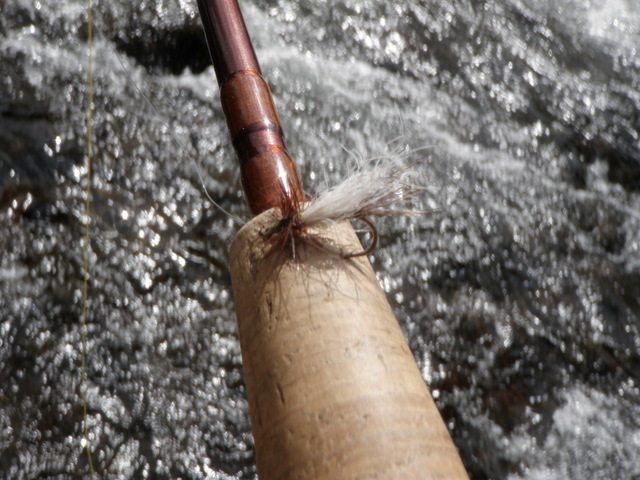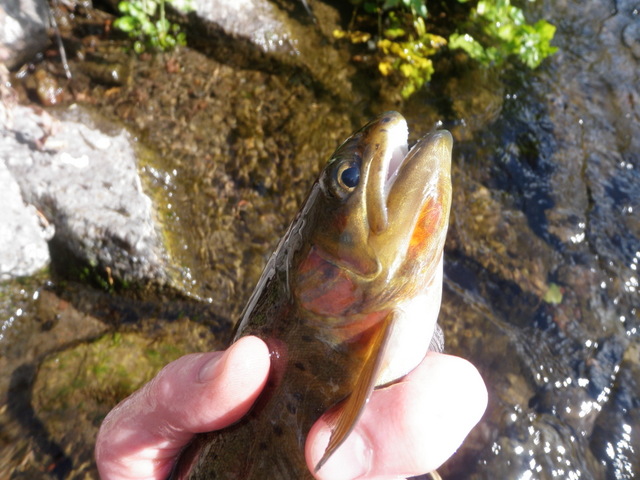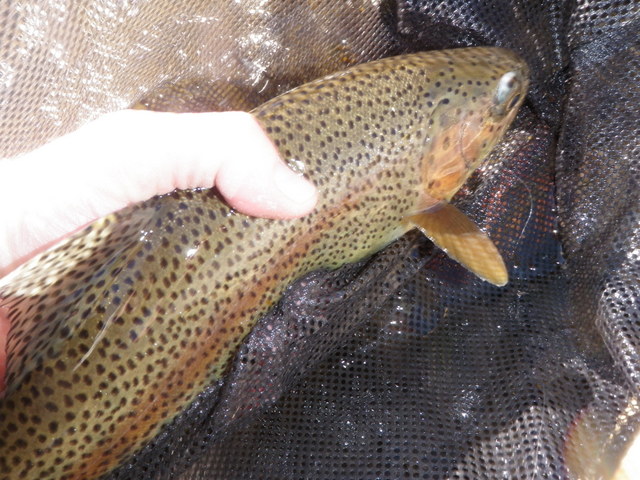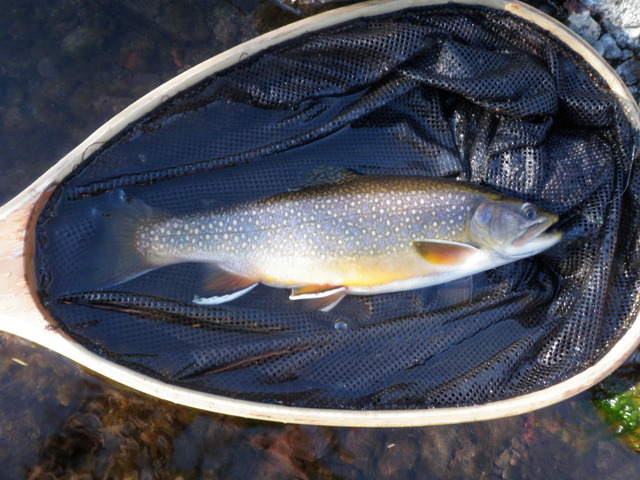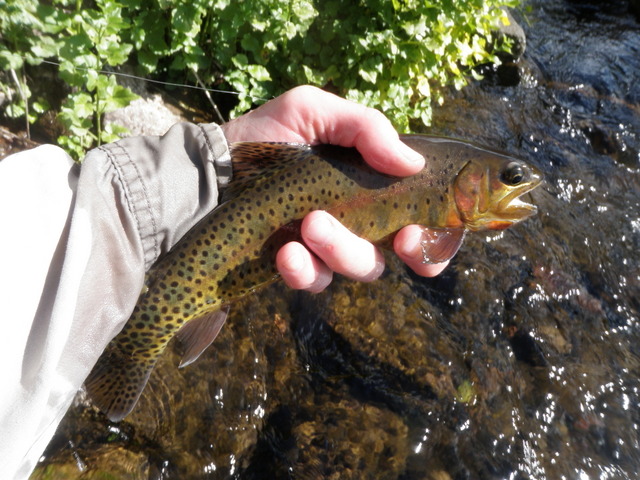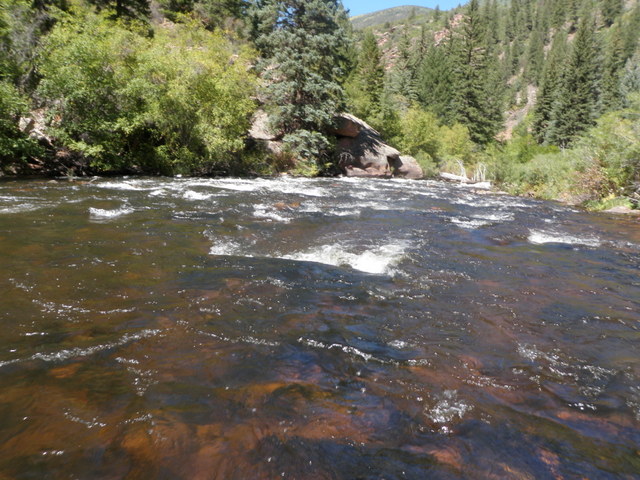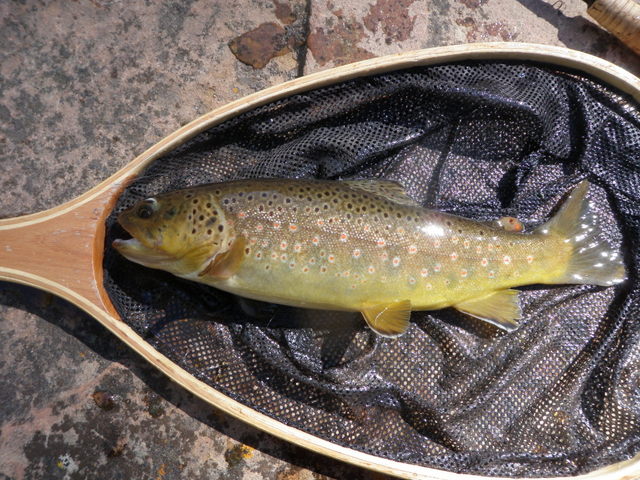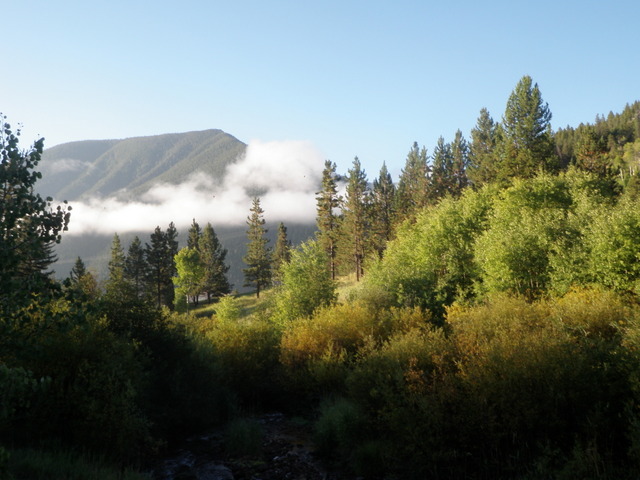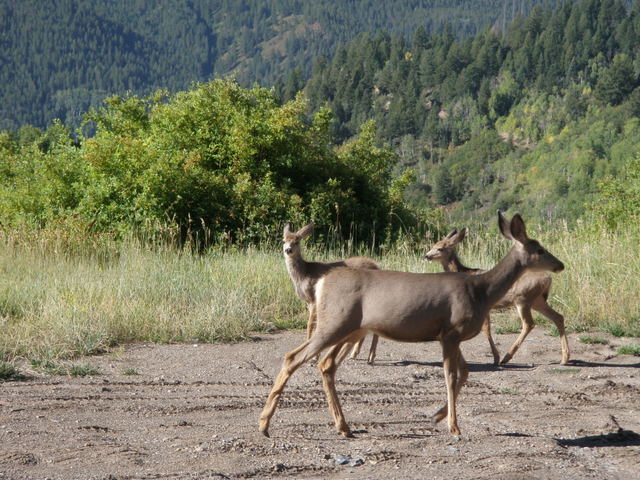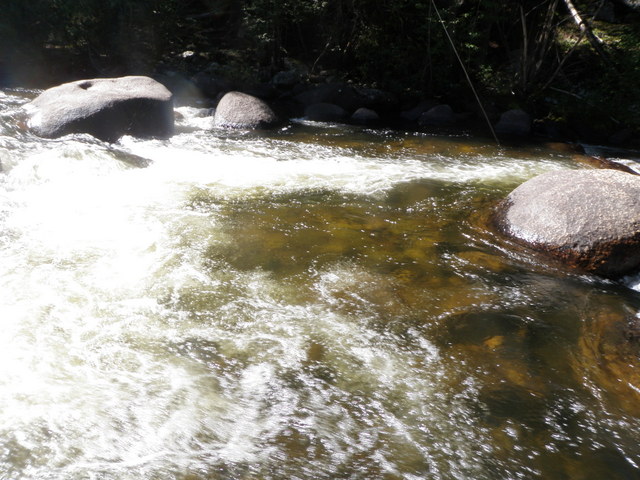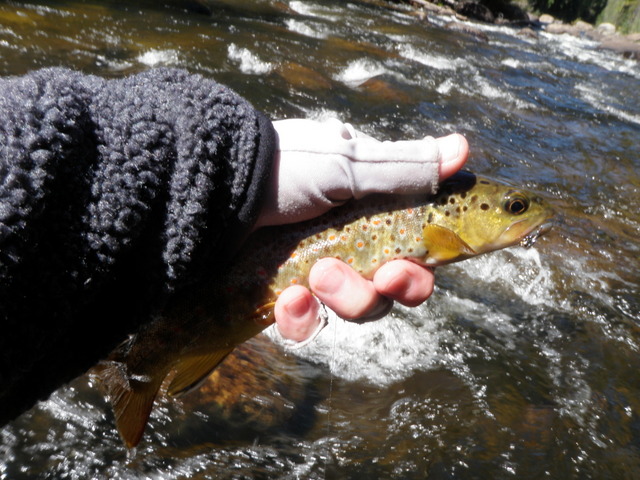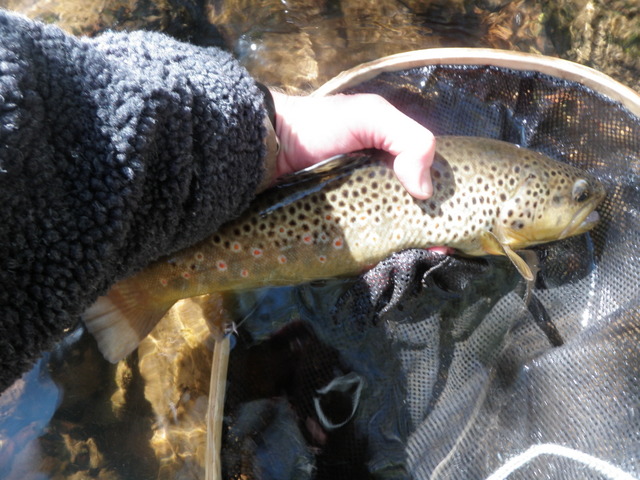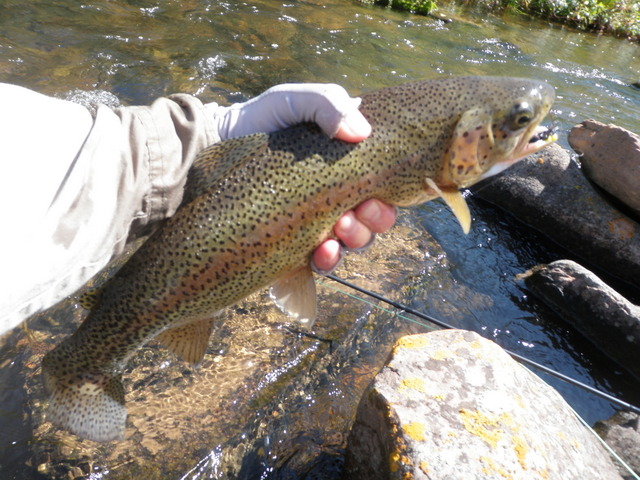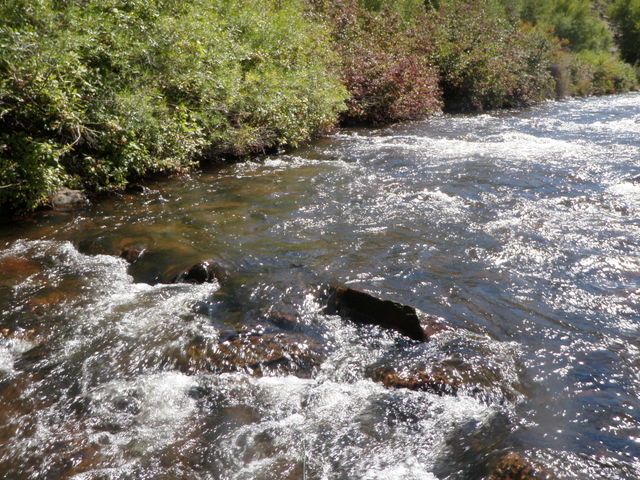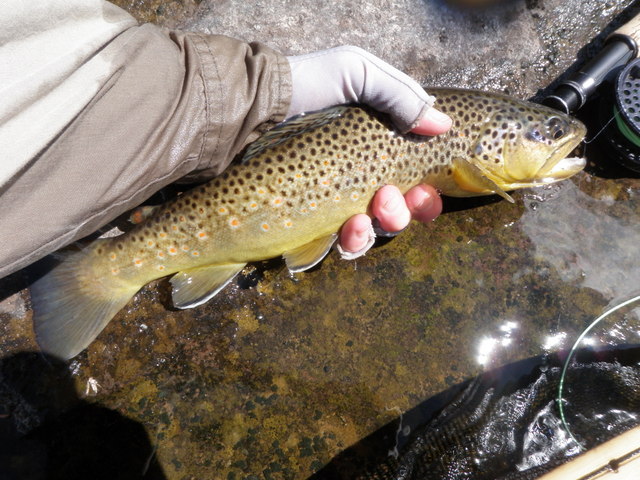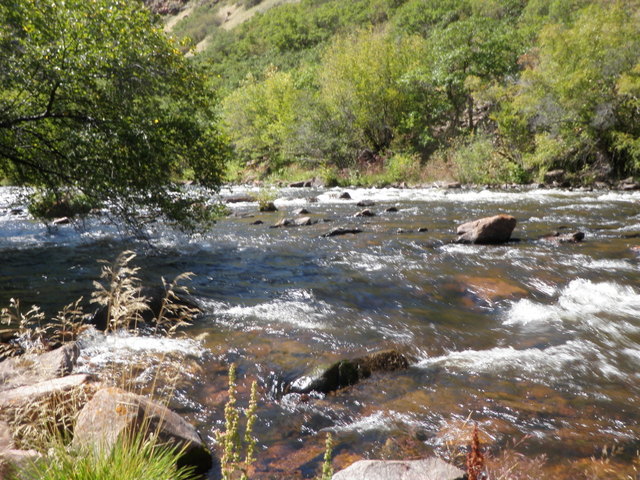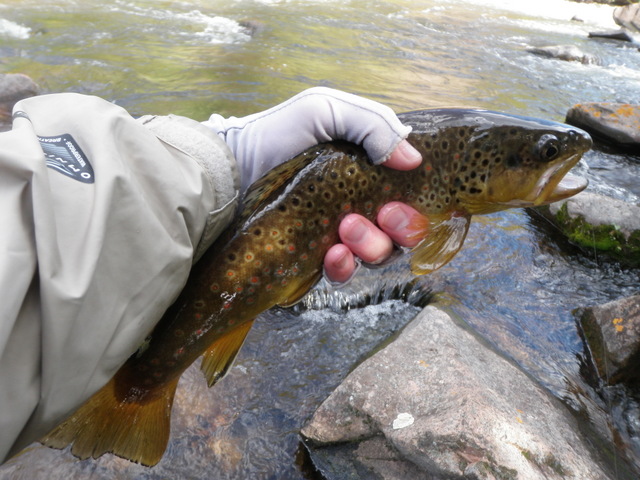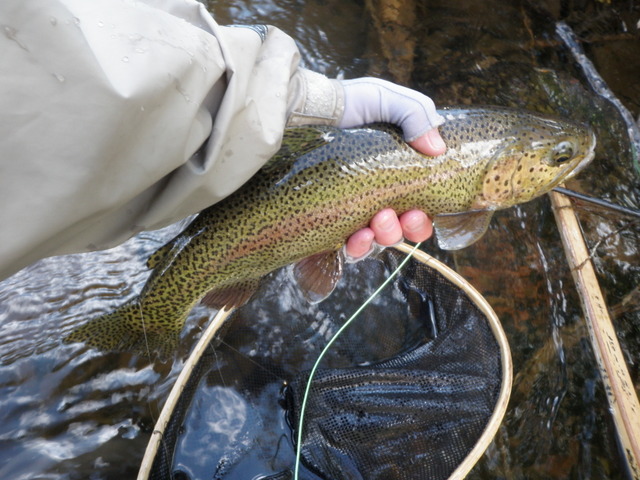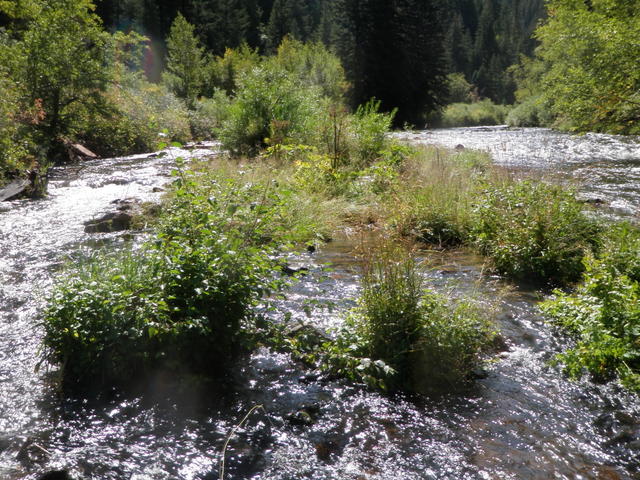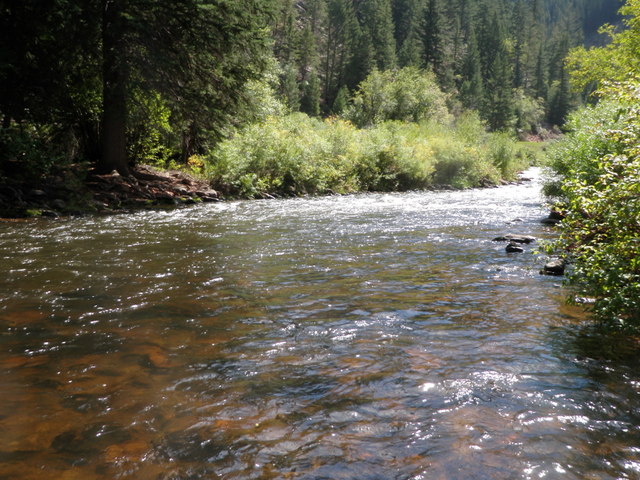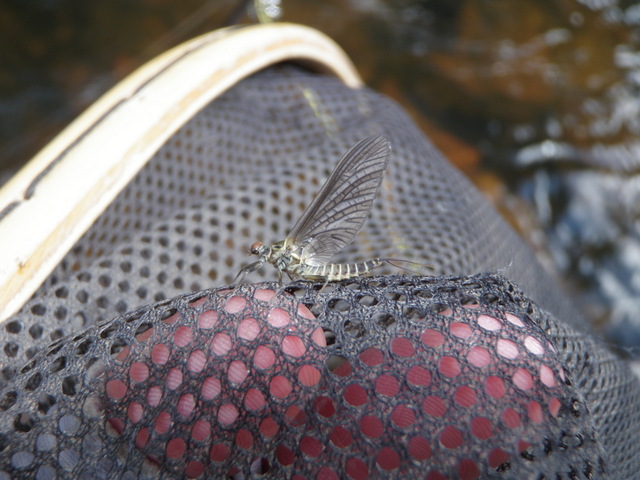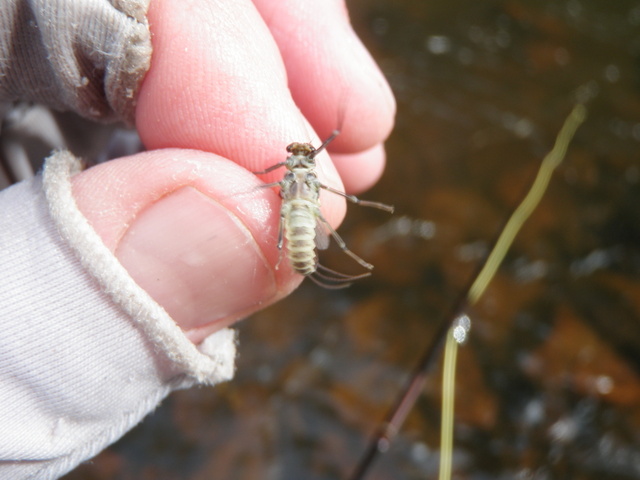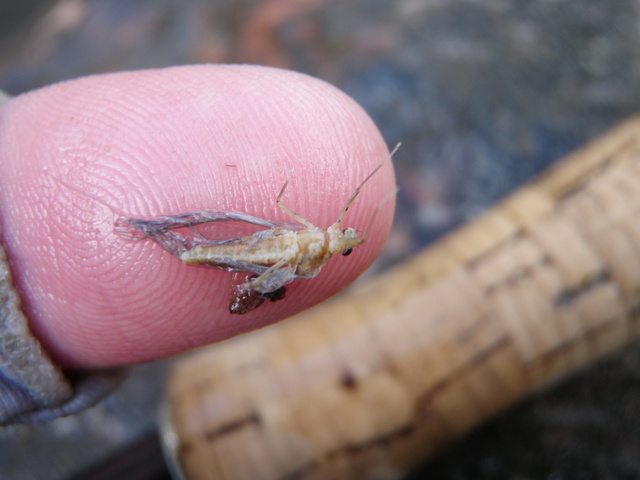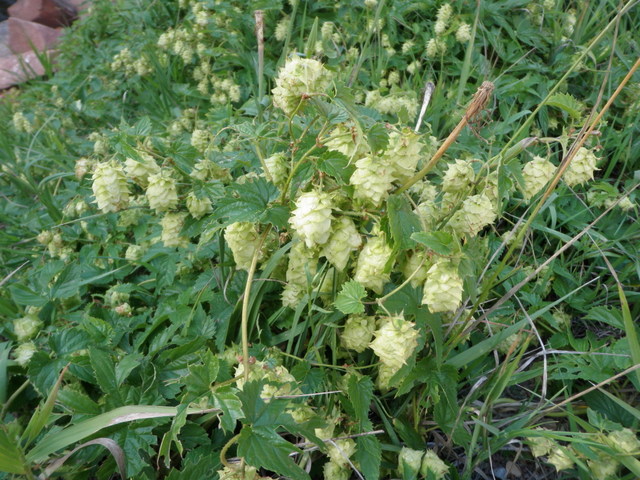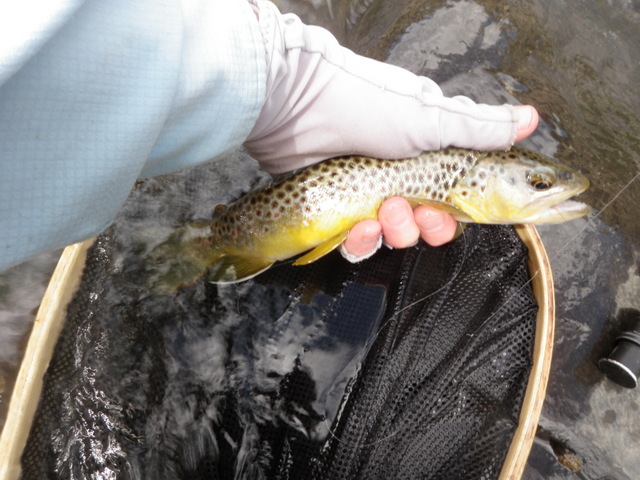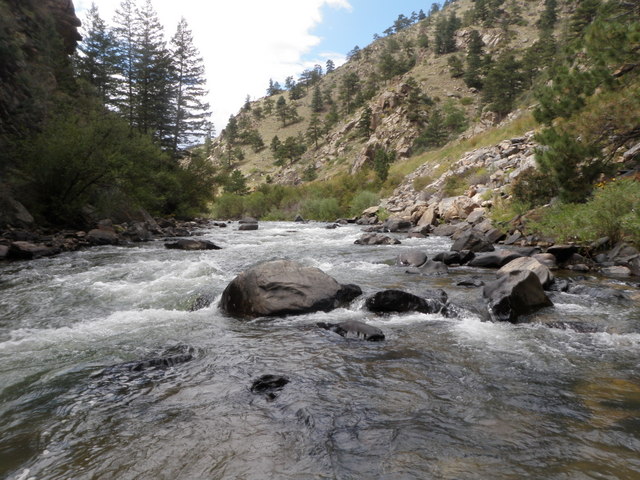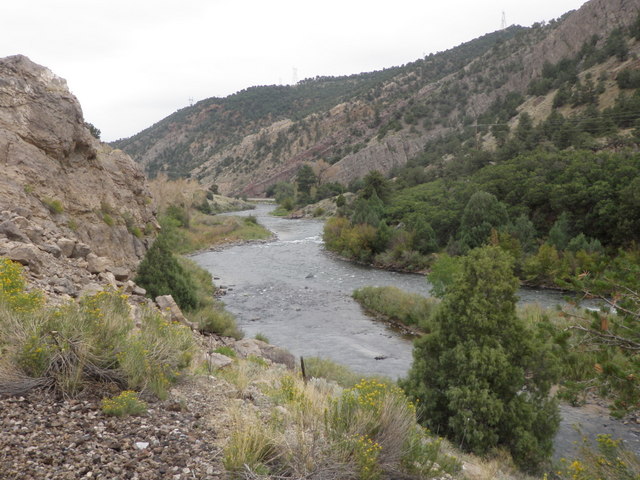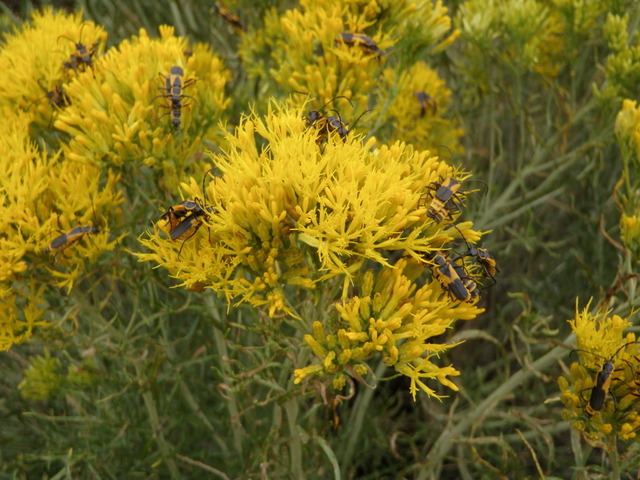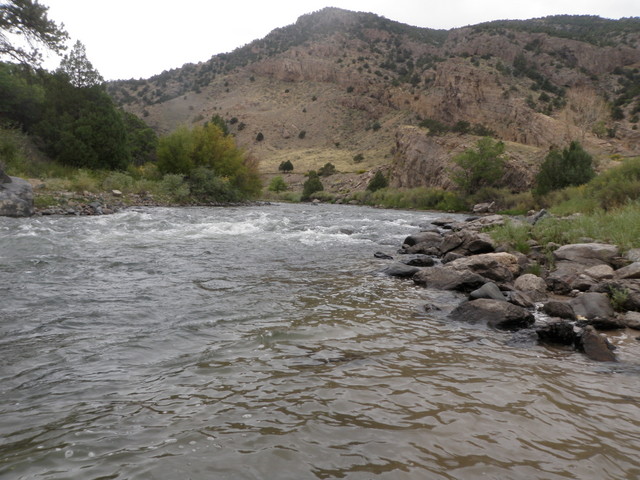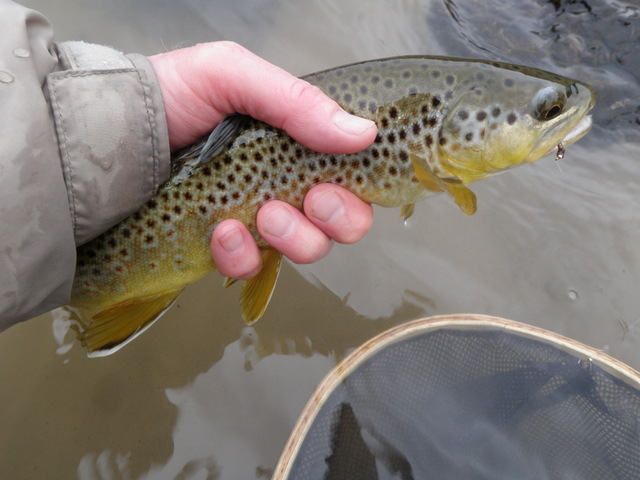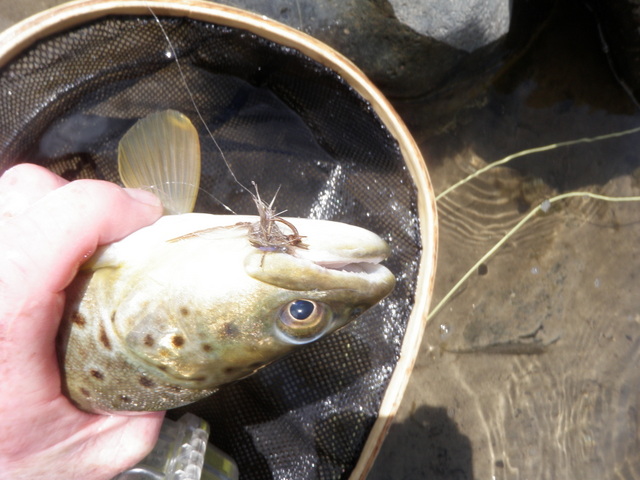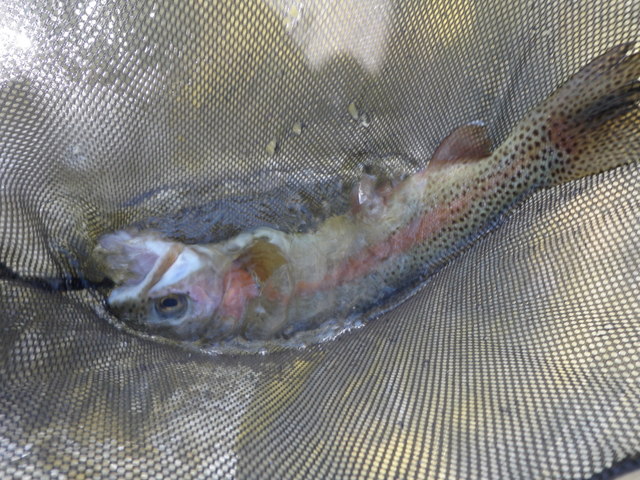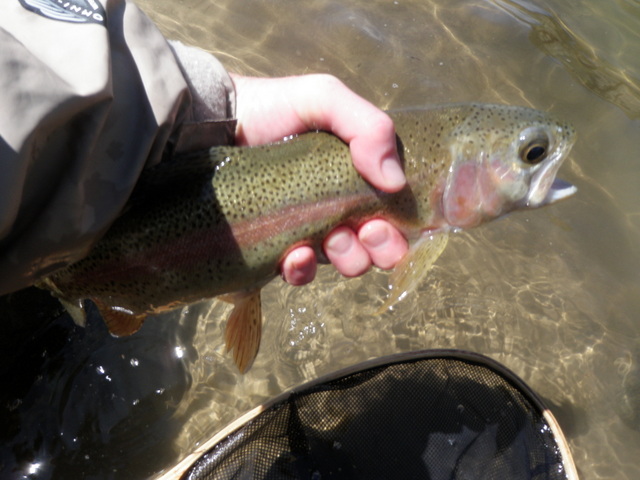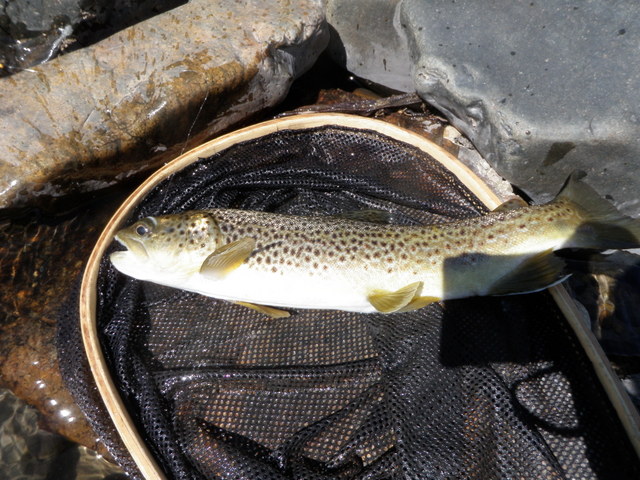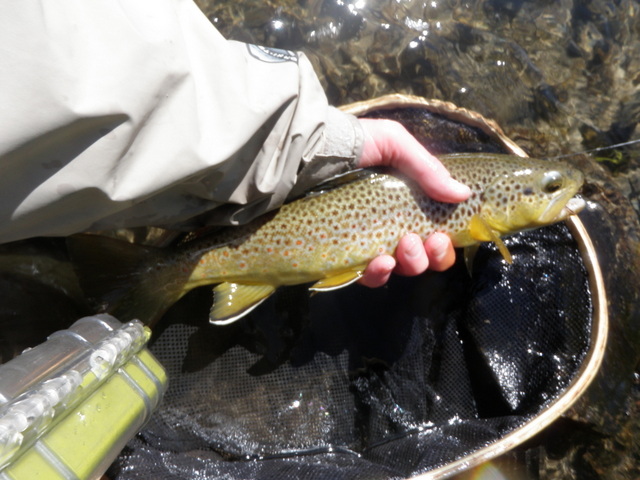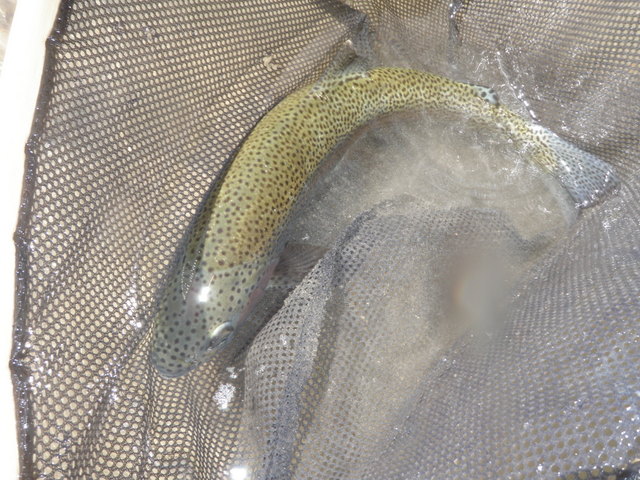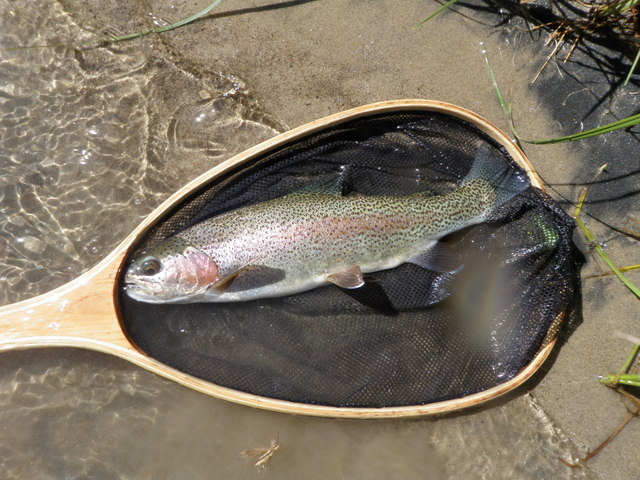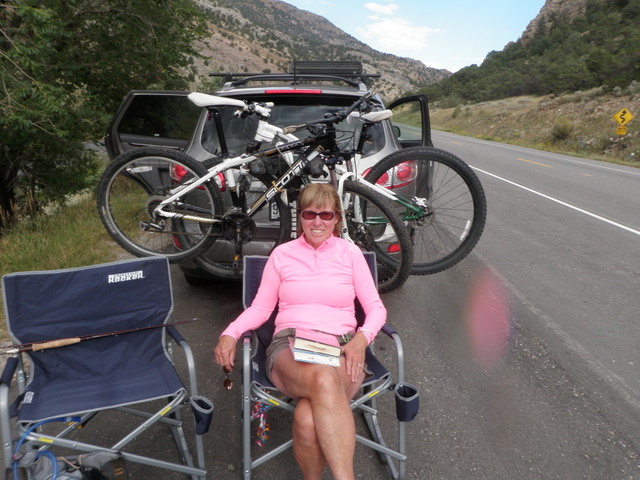Time: 9:30AM – 6:00PM
Location: From confluence with Snell Creek upstream; Himes Peak Campground where I ended on Tuesday and then upstream to huge beaver pond.
Fish Landed: 26
North Fork of the White River 09/17/2014 Photo Album
Despite one of my best days of fishing in 2014 on the upper North Fork above Himes Peak, I decided I wanted to explore different water on Wednesday. I had mixed success on the North Fork near the confluence with Snell Creek on previous visits, so I decided to give it another try. I had a quick breakfast and prepared my lunch and got off to a nice early start. Wednesday was shaping up to be another gorgeous fall day in the Flattops, and I suspect the air temperature never got lower than 50 on Tuesday night and Wednesday morning.
As I prepared to fish I wore my UnderArmour shirt under my fishing shirt and assembled my six weight four piece Scott rod. Both of these choices proved to be mistakes as I grew to be overheated, and the large rod was overkill for the size of the North Fork. I parked on the shoulder along the bend of Trappers Lake Road and found a worn path that led me down the steep bank to the point where Snell Creek joined the North Fork. I was searching for the nice pool near an overhanging evergreen tree where I landed some nice trout in two previous experiences on this stretch of the White River. Some tight bushes and trees forced me to cross the river, and then I maneuvered down the south bank until I was across from the targeted pool.
I’m not sure if it was due to the higher than normal September flows or a permanent shift in the structure of the river, but the pool was much narrower than what I remembered. Nevertheless I rigged with a Chernobyl ant, beadhead hares ear, and copper john and began prospecting the seven foot wide deep run and pool. I managed a split second hook up toward the tail of the run, but that was the extent of my action on the evergreen pool, so I moved along and began wading upstream.
Over the next two hours I covered a huge amount of water, but it was mostly wading and not casting. The river in this section was largely a fast riffle, and it did not contain very many good holding lies for fish. I managed one nine inch rainbow trout in a narrow slot along the south bank, as I continued upstream farther than I had ever ventured previously. I kept expecting the river to narrow a bit and thus present more deep pockets and pools, but it never happened, so I decided to cut my losses and found a weak path that led up the steep north bank to a very high position. As I followed the path, it became more defined and eventually connected with the steep path that I originally used to descend to the North Fork at the start of my two hour fishing adventure.
When I reached the car, I promptly removed my UnderArmour shirt and returned the six weight Scott to its protective case, and then I drove another eight miles to the Himes Peak Campground. If I landed forty fish in one afternoon, why couldn’t I repeat this success if I continued from my ending point? This thought danced through my head as I put together my Sage four weight four piece rod and then quickly devoured my lunch. In order to find my ending point I walked up the dirt road from the parking lot a short distance and then found a faint trail that cut across an open grass area and led me toward the fence line. I followed the fence line beyond the lower beaver pond until it led me into a wooded area, and at this point I cut south and perpendicular to the fence until I intersected with the river. The fence line strategy worked quite well as I entered the river just below the breached beaver dam that produced numerous fish for me on Tuesday.
I tied on an orange body stimulator that I purchased at Charlie’s Fly Box and began probing all the attractive water. It was around 12:30 when I began, and the air temperature had warmed quite a bit making me thankful that I removed the long sleeved insulated UnderArmour shirt. It wasn’t long before I landed a small brook trout on the stimulator, but the catch rate was much slower than the previous day. This surprised me as I was surely in water that rarely got touched by other fishermen. Perhaps the orange color of the stimulator body was not a good one? I opted to switch it for a larger version with a tan body, but this fly was equally ignored by the trout.
Next I experimented with a Chernobyl ant and beadhead pheasant tail and followed that tandem with a parachute gray hopper, but the hopper generated only a number of refusals before I added a beadhead hares ear. By two o’clock I landed seven trout, and I remember thinking that it was very slow and quite different from the previous day. I could only attribute the change to fewer clouds and warmer air temperatures.
Since the lime green trude had served me well for a while on Tuesday, I elected to give it a try, and this proved to be a good decision. I added four more trout to reach eleven by 2:30. If nothing else, this shows how spoiled I was to be dissatisfied with ten fish in two hours. The green trude continued producing beyond 2:30 including several nice rainbows that took it after it sank. Eventually I began to observe blue winged olives in the air, so I converted from the lime green trude to a tan Charlie Boy hopper with legs as I needed a larger more buoyant fly to support droppers. Since fish were taking the submerged lime green trude, I decided to try a bright green caddis pupa as a dropper from the Charlie Boy. This was a great idea, but the trout were not buying it, although I did catch some fish on the Charlie Boy.
The green caddis pupa had its opportunity but failed to deliver, so I swapped it for a beadhead hares ear and added a salvation nymph as my point fly. From 4:30 until 6:00PM these three flies produced with nearly an even amount of production coming from each. The fishing action improved considerably during the last hour and a half as the air temperature cooled and shadows began to extend over the stream. Many more insects were visible including blue winged olives, small tan caddis, and a few pale morning duns. I did not see any significant surface activity, but the fish were clearly tuned into nymphs and began to take my offerings with more confidence.
By six o’clock the stream was entirely covered by shadows and the insect activity was largely absent so I decided to execute my exit strategy. I was hoping to avoid the long hike back along the fence line, and instead planned to see if I could reach the road. I climbed over a dense area of deadfalls from the wildfire until I crested a hill, and here I could see a large beaver pond on a small tributary, and the road was visible high above the pond. Unfortunately the barbed wire fence continued along the slope and separated me from the road. There appeared to be a path from the road to the beaver pond, so I assumed that someone found an opening in the fence, and I proceeded to skirt the west side of the pond until I reached the “path”.
At this point I realized that the “path” was actually an area where the beavers had beaten down the grass as they moved back and forth with their gnawed off branches. I proceeded up the bank in spite of this and discovered that someone had separated the barbed wire strands and twisted them together enough to allow me to squeeze through. I removed my front pack and backpack and slid through the narrow opening and then carefully and slowly climbed the bank until I was on the road.
I hiked along the road for .75 mile when the driver of a passing pick up truck stopped and offered me a ride. I accepted the offer and angled my rod from the back seat through an open window and then jumped in. The driver was named George, and he was from Syracuse, NY and had been camping and living in Colorado since August. He was a hunter and practitioner of hang gliding and also quite a conversationalist. After a brief drive he turned on the campground road and dropped me off by my car at the Himes Peak Campground parking lot. Somehow my beadhead hares ear and salvation nymph must have hooked something in George’s truck and broken off, as they were missing when I broke down the rod and returned it to its case.
It turned out to be a fun day on the North Fork despite the slow morning. I worked harder for fewer fish than Tuesday, but I still managed to land 26 and several very nice rainbows and brook trout were included in the count. It was an unbelievably nice fall day, and I’m sure the high temperature reached 80 degrees. I had one more day to explore the White River drainage, and I needed to decide on a destination.

